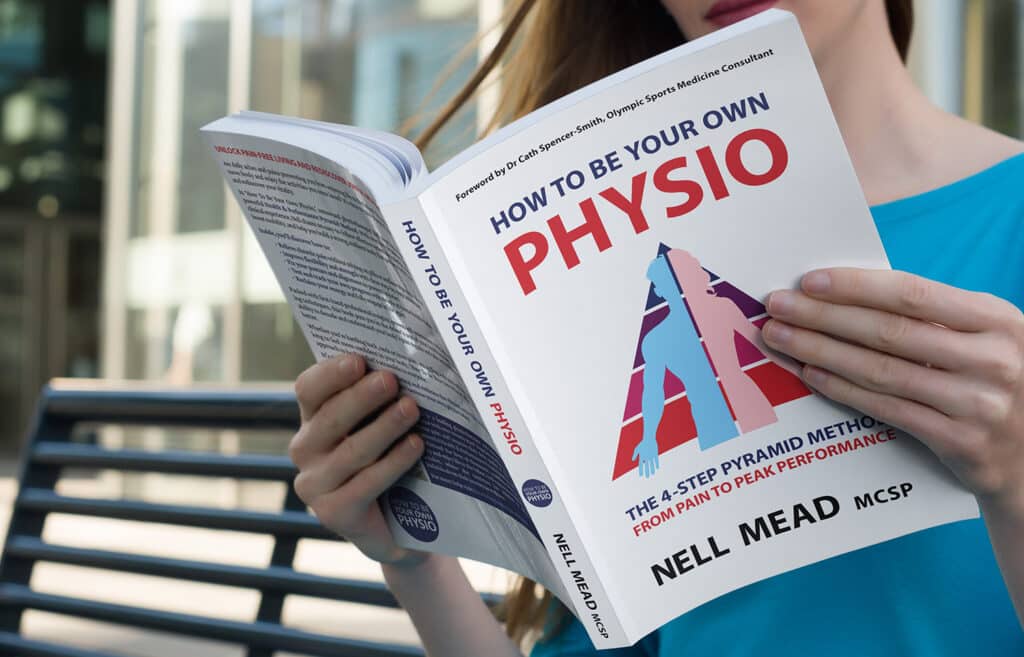Last week, I talked about why we have ankles and the ways in which they can go wrong. This week, it’s time to talk about the acute ankle injury. When does it need immediate professional attention, and how should you treat it yourself?
The joints are supported and protected by ligaments — fibrous strings which attach bone to bone. When you twist your ankle forcefully, or wrench it into an extreme position, the ligaments can become overstretched, or sprained, as some or all of the fibres tear. The most commonly-sprained ligament in the ankle is the anterior talofibular ligament, which attaches the talus at the top of the foot, to the fibula at the outside of the lower leg.
Ankle sprains are generally classified either grade I (mild damage to some fibres, without instability), grade II (partial tear, some laxity) and grade III (complete tear with instability of the joint).
Should I get an X-ray? Follow the Ottawa Rules to find out…
But, first things first. What if it’s not “just” a sprained ligament — what if it’s actually a fracture?
Medical professionals follow the Ottawa Rules (left) which help us decide whether an X-ray is required. Most of the time — even if you have pain in either ankle bone (malleolus), or around the 5th metatarsal or the navicular, you probably haven’t actually fractured anything, and these areas are hurting because you have a painfully overstretched ligament that attaches to the bone in this area; but it’s definitely best to get that confirmed.
Having determined that the problem is a sprain (either because you can bear weight through your foot, or because you don’t have bony tenderness), what next? Or, if you can’t get to a hospital immediately for an X-ray, what should you do?
First aid
Immediately after an injury, and for the next 24–48 hours in the case of a sprain, or until you get to hospital if you need an X-ray, the best way to minimise the severity of the injury is to treat it with RICE: Rest, Ice, Compression, Elevation. The aim of this is to reduce blood flow to the area (when you sprain ligaments, you often also tear small blood vessels, and until these heal, they can leak blood, which irritates the tissues and causes swelling) and allow clotting to take place.
During this period you should avoid taking anti-inflammatory medication such as ibuprofen, as this can delay the healing process; and painkillers such as aspirin, as these thin the blood and thus delay clotting. If you are in pain and are able to take it, paracetamol is a good option.
Rest: Stay off the ankle as much as possible for 48 hours.
Ice: An ice pack or a packet of frozen peas applied to the ankle for 10 minutes every 2 hours can help to reduce both pain and swelling.
Compression: A cohesive bandage or a professional ankle support will help to reduce swelling, which is useful because swelling can cause secondary damage to tissues surrounding the sprain. The compression should be firm but not so tight that you lose sensation in your toes, or that the colour or temperature of your toes changes. NB — even though they give it out in hospitals, Tubigrip is not a compression bandage, it is too stretchy.
Elevation: Another really useful tool in the fight against excessive swelling — lie on your back with your legs supported by the wall, or by the arm of a sofa. Your ankle should be above the level of your groin, thus using gravity to help your lymphatic system to drain away fluid from the swollen ankle.
What next?
After 48 hours, it’s time to start moving the ankle again, gently. The aim now is to encourage fresh blood to flow through the area in order to flush away the “toxins” (including leaked blood, exudate, prostaglandins, fibrinogen and lactic acid, all of which irritate the ligament and joint) and to stimulate some healing of the ligament.
This means regularly pushing, pulling and twisting your ankle (using your ankle muscles only). Try writing the alphabet in the air with your toes. Be gentle — this isn’t the time for sudden, big movements. As your ankle heals, you’ll be able to make the movements bigger, so start small.
It also means “isometric” exercises — which means making the muscles work, while keeping the joint still. You can do this by sitting beside the wall and pushing the outside of your foot into the wall, thus working the peroneal muscles in the outer calf; or by putting your feet together and pushing inward with your injured foot, using the other foot as resistance.
Many people will still find that the injured ankle is swollen at this point, and if that includes you, then I am still a fan of continuing with RICE until the swelling subsides.
Once these exercises are fairly comfortable — which, depending on the severity of your injury, could take from 2 days to 3 weeks — it’s time to move onto something more strenuous, which I’ll discuss next week.
Please note that a blog is never a substitute for an individual medical opinion. If you’ve twisted your ankle and it’s more than a slight sprain, it’s worth getting it properly assessed by an experienced professional as quickly as possible — it’s important to work out exactly what damage you’ve done, so that you can help it to heal as quickly and optimally as possible. If you’d like a physio assessment, please call us on 0207 175 0150.







